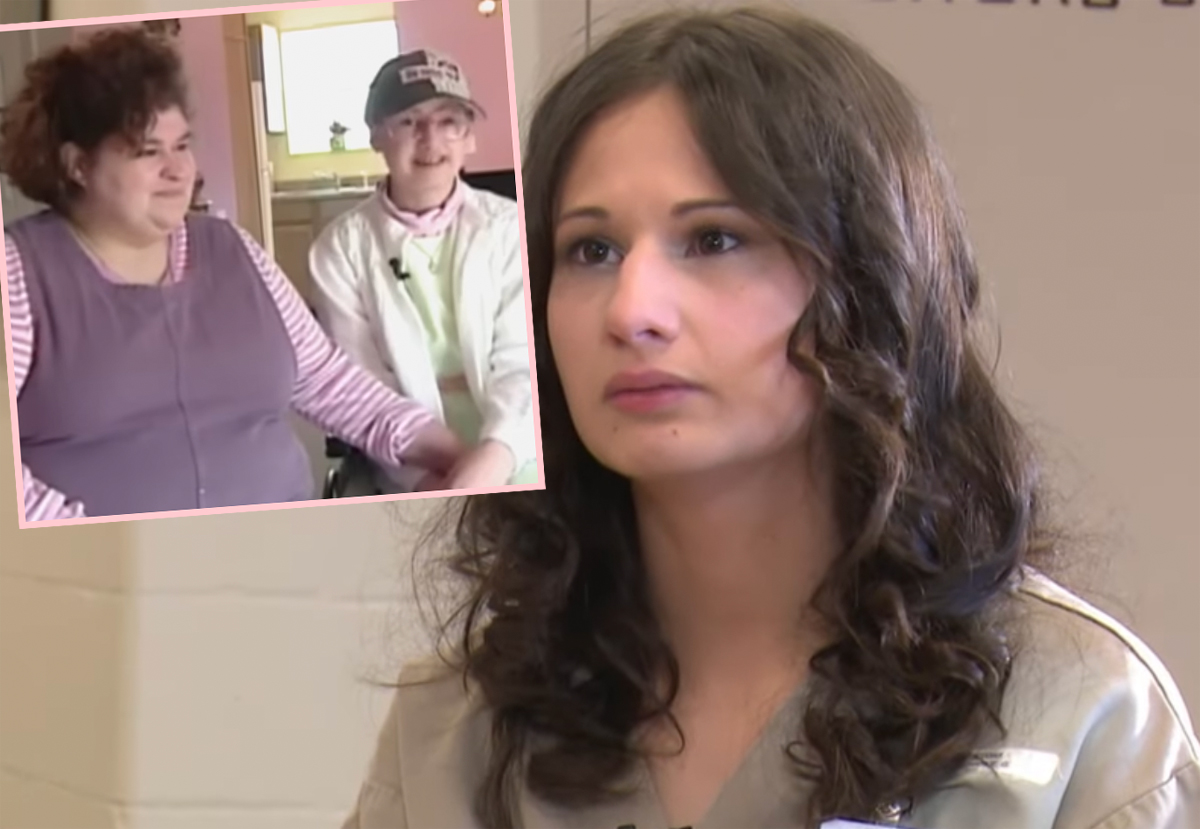Gypsy autopsy photos have long been shrouded in mystery and intrigue, capturing the imagination of many who seek to uncover the hidden stories behind these images. These photographs, often controversial and sensitive, provide a glimpse into the life and death of individuals whose lives were tragically cut short. As we delve into this topic, we will explore the significance of these images, their historical context, and the ethical considerations surrounding their use.
Throughout history, autopsy photos have played a crucial role in forensic investigations, helping to determine the cause of death and uncovering vital evidence. In the case of Gypsy communities, these images often carry cultural and social implications that extend beyond the mere documentation of death. By examining these photographs, we can gain insight into the unique challenges faced by Gypsy populations and the broader societal issues at play.
This article aims to provide a comprehensive exploration of Gypsy autopsy photos, shedding light on their origins, significance, and the ethical dilemmas they present. Through careful analysis and expert insights, we will unravel the complexities surrounding these images and their impact on both individuals and communities.
Read also:Understanding Hdhud 4uin A Comprehensive Guide To Its Features Benefits And Applications
Understanding the Gypsy Autopsy Phenomenon
The Origins of Gypsy Autopsy Photos
Gypsy autopsy photos have their roots in the early days of forensic science, where photography became an essential tool for documenting and analyzing deaths. The Gypsy community, known for its rich cultural heritage and often marginalized status, has been the subject of fascination and scrutiny. These images often emerged in cases where Gypsy individuals were involved in high-profile crimes or mysterious deaths, sparking public interest and debate.
According to the Forensic Science Simplified, autopsy photos serve as critical evidence in legal proceedings, helping to establish the circumstances surrounding a death. In the context of Gypsy communities, these images have taken on additional layers of meaning, reflecting the intersection of culture, law, and society.
Key Characteristics of Gypsy Autopsy Photos
- Highly detailed imagery capturing the physical state of the deceased.
- Often used in forensic investigations to determine the cause of death.
- Carry cultural significance due to the unique traditions and practices of Gypsy communities.
- Subject to ethical debates regarding privacy and consent.
These characteristics highlight the dual nature of Gypsy autopsy photos, serving both as scientific tools and as cultural artifacts that warrant careful consideration.
Historical Context of Gypsy Autopsies
To fully understand the significance of Gypsy autopsy photos, it is essential to examine their historical context. Gypsy communities have long faced discrimination and marginalization, with their deaths often attracting disproportionate attention from the media and law enforcement. This historical backdrop has shaped the way these images are perceived and utilized.
According to a report by the United Nations, Gypsy populations have historically been subjected to systemic discrimination, impacting their access to justice and healthcare. Autopsy photos, in this context, serve as a reminder of the broader social and political issues affecting these communities.
Legal and Ethical Considerations
The Role of Autopsy Photos in Forensic Investigations
Autopsy photos play a vital role in forensic investigations, providing critical evidence that can help solve crimes and bring justice to victims. However, the use of these images in the context of Gypsy communities raises important legal and ethical questions. The American Bar Association emphasizes the need for transparency and accountability in the use of such evidence, ensuring that the rights of all individuals are respected.
Read also:Telugu Movierulz The Ultimate Guide To Understanding And Exploring The Phenomenon
Ethical Dilemmas Surrounding Gypsy Autopsy Photos
- Privacy concerns: The use of autopsy photos without the consent of the deceased's family can infringe on their right to privacy.
- Cultural sensitivity: Gypsy communities may view these images as disrespectful or offensive, highlighting the need for cultural awareness in forensic practices.
- Media exploitation: The sensationalization of Gypsy autopsy photos in the media can perpetuate stereotypes and reinforce negative perceptions of these communities.
Addressing these ethical dilemmas requires a balanced approach that respects the rights of individuals while acknowledging the importance of these images in forensic investigations.
Cultural Implications of Gypsy Autopsy Photos
Gypsy autopsy photos carry significant cultural implications, reflecting the unique traditions and practices of Gypsy communities. These images often evoke strong emotions, serving as a reminder of the challenges faced by these populations. By examining the cultural context of these photographs, we can gain a deeper understanding of their impact on both individuals and communities.
According to the Cultural Survival, Gypsy communities have rich cultural traditions that must be respected and preserved. The use of autopsy photos in this context requires sensitivity and awareness of these cultural nuances.
Social and Political Impact
The social and political impact of Gypsy autopsy photos cannot be overstated. These images have the power to shape public perception and influence policy decisions. By examining their role in society, we can better understand their broader implications.
Impact on Public Perception
Gypsy autopsy photos often attract significant media attention, influencing public opinion and shaping narratives about Gypsy communities. This can have both positive and negative effects, depending on how these images are presented and interpreted.
Policy Implications
The use of autopsy photos in legal and political contexts can have far-reaching consequences, impacting everything from law enforcement practices to social welfare policies. Ensuring that these images are used responsibly and ethically is essential for promoting justice and equality.
Technological Advancements in Forensic Photography
Advancements in technology have revolutionized the field of forensic photography, enhancing the quality and accuracy of autopsy photos. These developments have significant implications for the use of Gypsy autopsy photos, improving their reliability as evidence while raising new ethical considerations.
Modern Techniques in Autopsy Photography
- High-resolution imaging: Provides detailed and accurate representations of the deceased.
- 3D modeling: Allows for the creation of virtual reconstructions of the crime scene.
- Enhanced data analysis: Facilitates the extraction of valuable information from autopsy photos.
These technological advancements offer promising opportunities for improving forensic investigations while addressing the ethical concerns associated with the use of these images.
Case Studies and Real-Life Examples
To illustrate the significance of Gypsy autopsy photos, we will examine several case studies and real-life examples. These examples highlight the complexities surrounding these images and their impact on both individuals and communities.
Case Study 1: The Death of a Gypsy Leader
In a high-profile case involving the death of a prominent Gypsy leader, autopsy photos played a crucial role in determining the cause of death. This case underscores the importance of these images in forensic investigations while raising important ethical questions about their use.
Case Study 2: Media Sensationalism
The media's coverage of Gypsy autopsy photos often leads to sensationalism, perpetuating stereotypes and reinforcing negative perceptions of Gypsy communities. This case study explores the impact of media representation on public perception and the need for responsible journalism.
Expert Opinions and Insights
Expert opinions and insights provide valuable perspectives on the significance of Gypsy autopsy photos. By consulting with forensic scientists, legal experts, and cultural specialists, we can gain a deeper understanding of the issues at play.
Forensic Expert Perspectives
Forensic experts emphasize the importance of using autopsy photos responsibly, ensuring that they are used solely for investigative purposes. The National Institute of Standards and Technology highlights the need for standardized protocols in the collection and analysis of these images.
Cultural Expert Perspectives
Cultural experts stress the importance of respecting the traditions and practices of Gypsy communities when dealing with autopsy photos. The UNESCO advocates for cultural sensitivity in all forensic practices, promoting a more inclusive approach to justice.
Conclusion and Call to Action
In conclusion, Gypsy autopsy photos represent a complex and multifaceted issue that requires careful consideration of legal, ethical, and cultural factors. By examining their origins, significance, and impact, we can gain a deeper understanding of their role in society and the broader implications they hold.
We invite you to share your thoughts and insights on this topic by leaving a comment below. Your feedback is invaluable in promoting a more informed and inclusive dialogue. Additionally, we encourage you to explore our other articles on related topics, further enriching your understanding of the issues at hand.
Table of Contents
- Understanding the Gypsy Autopsy Phenomenon
- The Origins of Gypsy Autopsy Photos
- Key Characteristics of Gypsy Autopsy Photos
- Historical Context of Gypsy Autopsies
- Legal and Ethical Considerations
- The Role of Autopsy Photos in Forensic Investigations
- Ethical Dilemmas Surrounding Gypsy Autopsy Photos
- Cultural Implications of Gypsy Autopsy Photos
- Social and Political Impact
- Technological Advancements in Forensic Photography
- Case Studies and Real-Life Examples
- Expert Opinions and Insights
- Conclusion and Call to Action


